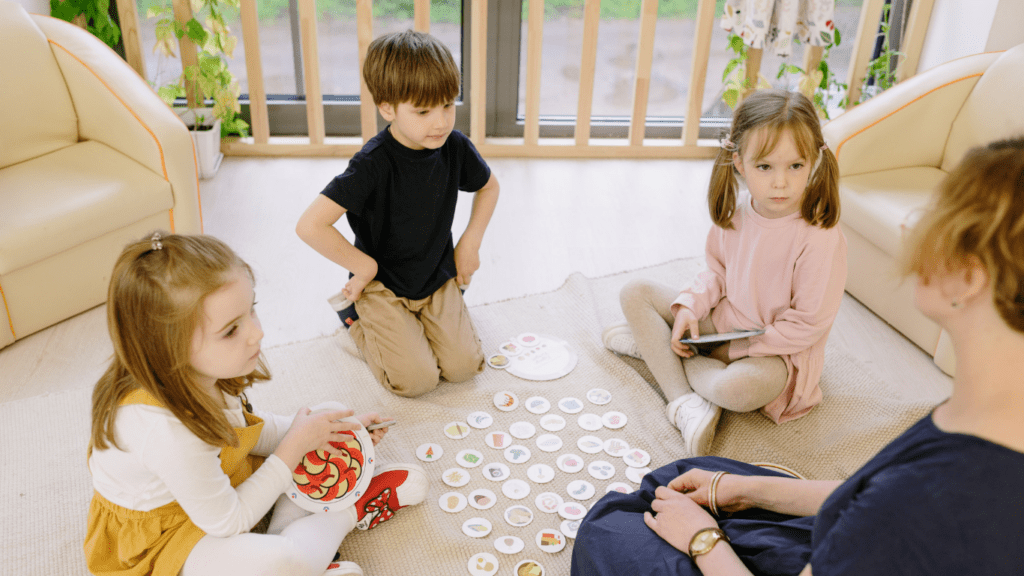Parenting without a blueprint can feel like trying to assemble furniture with missing instructions—frustrating, uncertain, and full of improvisation. That’s why learning practical techniques on how to parent convwbfamily can make a real difference. The strategies outlined in this guide on how to parent convwbfamily offer a structured approach that still respects your individuality as a parent. Whether you’re handling toddler tantrums or supporting teens, it’s about finding what works for your unique family dynamic without losing your mind—or your sense of humor.
Know Your Parenting Style Before You “Fix” It
Parenting styles aren’t just personality traits—they shape how your kids perceive boundaries, affection, and discipline. You’ve probably heard of the big four: authoritative, authoritarian, permissive, and neglectful. But here’s the catch: most of us don’t fall into just one category. We’re fluid, adjusting based on situations, stress levels, or even how much sleep we got last night.
That said, understanding your default tendencies is the root of effective parenting. Authoritative parenting—firm but warm—is generally linked to better long-term outcomes. But maybe you lean a bit permissive when you’re overwhelmed at work, or a little authoritarian when you’re rushing out the door. Recognizing that swing helps you reset and stay grounded in an intentional approach.
Consistency Over Intensity
Many parents think they need to be superheroes in major situations—serious talks, huge punishments, moral lessons with TED Talk energy. But the truth? Kids learn more from small, repeated actions than from rare, dramatic ones.
That’s why parenting experts consistently emphasize routine. Consistent consequences. Predictable bedtimes. Clear boundaries. Children feel safest when they know what’s coming next, even if they push back. The magic in how to parent convwbfamily isn’t in major gestures—it’s in showing up the same way, every day.
So if your kid throws a tantrum and you respond calmly (again), they may not smile and thank you now. But what you’re building is emotional scaffolding that sticks.
Adapt Your Communication As They Grow
Toddlers and teens don’t speak the same language. Or rather, they don’t listen to the same language. A two-year-old needs simple clarity: “No hitting. We use kind hands.” A sixteen-year-old, on the other hand, might need thoughtful conversation, not a lecture—no matter how tempting it is to go full monologue.
A major tenet in learning how to parent convwbfamily is knowing when to shift from instructing to supporting. As children get older, your role changes from director to coach. You no longer call every shot, but you still set the rules of play. And yes, coaching requires patience. And snacks. Lots of snacks.
Make Space For Mistakes (Yours and Theirs)
Let’s be clear—perfection isn’t the goal. Not for you, and definitely not for your kids. One of the most undervalued parenting superpowers is modeling how to own mistakes. When you blow up after a long day and realize later you weren’t fair, don’t sweep it under the rug. Address it. “I lost my cool earlier. I’m sorry. Next time I’ll try to breathe instead of shout.”
That ownership does two things: it fosters trust and teaches resilience. Your kids learn that messing up doesn’t make someone unworthy—it just makes them human. If you’re practicing how to parent convwbfamily with intention, then letting your family see your growth in real time becomes an incredible teaching tool.
Screens, Schedules, and Sanity
We can’t talk about modern parenting and not mention screens. They’re in classrooms, bedrooms, backpacks—and they’re not leaving. Screen time doesn’t have to be the enemy, but it does require boundaries. Set family agreements about when and how devices are used, and hold yourself to them too.
Schedules matter beyond school and activities. Kids benefit from basic structure, even if it’s flexible. Dinner at a regular time, a wind-down routine before bed—these rhythms help regulate more than just behavior. They provide psychological safety.
Sanity comes when you realize you’re guiding your child, not controlling them. Control is short-lived; influence lasts longer. The real win isn’t in preventing every outburst or mistake, but in preserving your connection through them.
Build Your Support Network
Parenting isn’t meant to be solo. Yet many of us treat it like it is, either due to pride, guilt, or sheer time constraints. The healthiest families—especially those following the how to parent convwbfamily approach—prioritize connection not just within the nuclear unit, but outside of it.
That means cultivating community. Not perfection. Find other parents to lean on, vent to, text memes to at 2 a.m. No one understands the chaos of raising a child like someone also waking up to Paw Patrol theme music.
Forget parenting as performance art. Build relationships that help you stay grounded. Sometimes sanity doesn’t come from being the best—it comes from being supported.
Final Thoughts: Simple Over Perfect
There’s a lot of noise out there about what parenting “should” look like. But honestly, parenting isn’t about achieving some glossy-magazine version of family life. It’s about showing up, listening, adjusting, and trying again—sometimes all before 9 a.m.
Learning how to parent convwbfamily means accepting the beautiful mess in front of you and figuring out a rhythm that works for your real life. Not some expert’s ideal. Not your neighbors. Yours.
So breathe. Laugh more. Judge less—including yourself. Parenting isn’t about perfection; it’s about persistence, presence, and a whole lot of grace.
And when in doubt? Go back to this guide on how to parent convwbfamily and take the next small, grounded step.


 Jameslee Silverayees – Founder Jameslee Silverayees is the founder and driving force behind Makes Parenting Watch, a comprehensive platform designed to support parents at every stage of their journey. As a parent himself, Jameslee recognized the overwhelming amount of information available and the need for a trusted source that offers practical, expert-backed advice. Drawing on his own experiences and his passion for family well-being, he created Makes Parenting Watch to be a one-stop resource for news, updates, and tips on everything from newborn care to family travel. Under his leadership, the website has grown into a highly respected community of parents, caregivers, and experts who come together to share insights and solutions. Jameslee is deeply committed to empowering families with the knowledge they need to raise healthy, happy children while fostering stronger family bonds.
Jameslee Silverayees – Founder Jameslee Silverayees is the founder and driving force behind Makes Parenting Watch, a comprehensive platform designed to support parents at every stage of their journey. As a parent himself, Jameslee recognized the overwhelming amount of information available and the need for a trusted source that offers practical, expert-backed advice. Drawing on his own experiences and his passion for family well-being, he created Makes Parenting Watch to be a one-stop resource for news, updates, and tips on everything from newborn care to family travel. Under his leadership, the website has grown into a highly respected community of parents, caregivers, and experts who come together to share insights and solutions. Jameslee is deeply committed to empowering families with the knowledge they need to raise healthy, happy children while fostering stronger family bonds.
